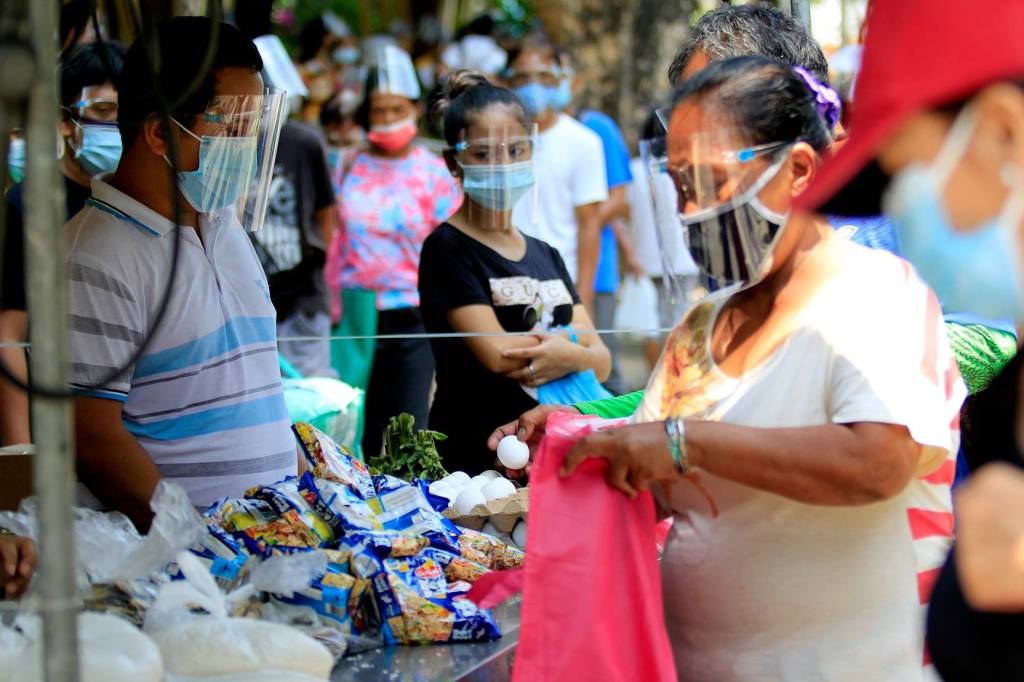4th Sunday of Easter: Laying Down One’s Life for the Other

The biggest good news in the Philippines today is the mushrooming of thousands of community pantries all over the country. The community pantries at best portrays the people’s bayanihan spirit–the spirit of helping each other especially in times of need. Many poor and hungry people benefitted from the free food offered by community pantries. The community pantries, however, also provided the opportunity for the poor people to offer whatever they have. Indeed, the community pantries highlights the value of sacrifice–it is a showcase of how people sacrifice their own goods on the one hand and how people benefits from the sacrifice of fellow poor people, on the other.
Today in Australia and New Zealand is Anzac Day. Anzac Day is a national day of remembrance which commemorates all Australians and New Zealanders “who served and died in all wars, conflicts, and peacekeeping operations” and “the contribution and suffering of all those who have served”.
Today’s fourth Sunday of Easter is called Good Shepherd Sunday. The gospel for this Sunday is always taken from the 10th chapter of John where Jesus speaks of himself as the “good shepherd” who lays down his life for the sheep.
Today is also called Vocation Sunday. On this day we are especially asked to pray that God may bestow the Church with servant leaders needed to do its work of spreading the Gospel.
Good shepherd is an Easter image. Why? As a good shepherd, Jesus did more for His sheep than any other shepherds—He died for them. Jesus as good shepherd sought the last, least and the lost even to the extent of leaving behind the 99 (Matthew 18:12–14). The two images of Jesus as the good shepherd, and Jesus as the crucified, proclaim essentially the same thing: he gave up His life for us. He died so that we his flock may have life, life to the full. Thus, Jesus as good shepherd is an image of the risen Christ.
I am the good shepherd,
and I know mine and mine know me,
just as the Father knows me and I know the Father;
and I will lay down my life for the sheep (John 10: 14 – 15).
Another reason why good shepherd is an Easter image is because it reflects the victory of Easter–Jesus conquering of death and evil. Despite the prevalence in our world today of the hunger for power, wealth and position, Jesus promise that his vision of service and inclusiveness especially for the least in society will prevail in the end. At the end of time, all will be one under Jesus as good shepherd.
Jesus’ servant and inclusive mission is continued by the church so as those who do not yet belong to the fold may be included in Jesus’ flock. But the only way for the church to follow the example of Jesus as good shepherd is through service, even to the extent of, following their master, laying down of one’s life for fellow sheep.
To be in the sheepfold of Jesus is to participate in the ‘shepherdness’ of Jesus. As followers of Jesus, we are called to shepherd one another, to search for the lost and the lonely, to care for the most abandoned, to protect the vulnerable and to defend the poor and the oppressed.
Through the Holy Spirit’s power bestowed upon the church in continuing the mission of Jesus the good shepherd, the door of salvation is opened wide to welcome everyone. Salvation is for all who hear and faithfully follow the voice of the Good Shepherd. Jesus promises in return to care for and protect His flock.
I have other sheep that do not belong to this fold.
These also I must lead, and they will hear my voice,
and there will be one flock, one shepherd (John 10: 16).
Jesus’ servant leadership as good shepherd runs in sharp contrast to many of the values, standards and manners of our leaders in the world today. Many of our leaders political, civic and yes in the church sadly is akin to the “hired hand (John 10:12)” that Jesus vehemently criticized.
A hired man, who is not a shepherd
and whose sheep are not his own,
sees a wolf coming and leaves the sheep and runs away,
and the wolf catches and scatters them.
This is because he works for pay and has no concern for the sheep (John 10: 12 – 13).
The image of the good shepherd is a call for us to proclaim Jesus’ values and attitudes of service and inclusiveness amidst the world’s vying for power, domination and position. As Easter people we are called to exercise our prophetic stance in the political arena by proclaiming Jesus, the good shepherd, in word and in deed. As Easter people we are called to be the “light of the world” and “salt of the earth” by transforming the world in the light of the gospel.
We also celebrate today Vocation Sunday, a day to reflect, discover and recognize God’s calling in each one of us. Pope Francis, in Evangelii Gaudium, calls out especially the religious and clergy to go out of the comforts of their convents and stay close to the marginalized and become “shepherds living with the smell of the sheep.” The call to be a shepherd, however, is not just a call for the ordained and religious. It is a call for all the flock—we, the church, lay and ordained—are called to shepherd one another and have the smell of each other’s ‘sheepness’.
Let me end with a prayer to Jesus our good shepherd,
O Jesus, our good shepherd,
we long to hear your voice
Let us know your will
Hold us in your arms
Help us to lay our lives
down for each other
So that someday
we may become one flock
with you as our shepherd.
I am passionate about the intersection between new media and technology. I continue to research and apply new media in theology and vice-versa. I am also a fan of Our Mother of Perpetual Help and her continuing relevance in today’s digital world.
View all posts by Baclaran Phenomenon





